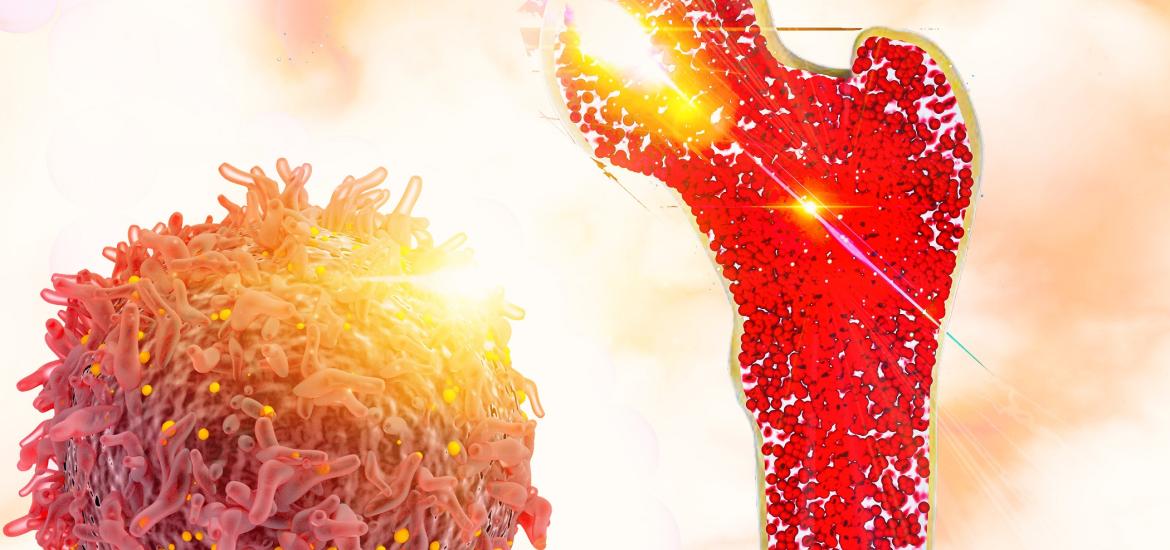
AbbVie opt-out puts the focus on TeneoOne
The big pharma group had two anti-BCMA assets to choose from, and yesterday gave Harpoon the bad news.
The big pharma group had two anti-BCMA assets to choose from, and yesterday gave Harpoon the bad news.

At last year’s ASH meeting the micro-cap biotech Harpoon Therapeutics presented fairly decent, albeit early, multiple myeloma data with its lead BCMA-targeting trispecific, HPN217. But the results clearly cut no ice with AbbVie, which yesterday turned down an option to acquire rights to the asset.
That’s tough luck for Harpoon, whose stock has lost 95% since being floated in 2019, and which relies on HPN217 to showcase its TriTAC technology adding albumin binding to extend the half life of a typical T-cell engaging MAb. AbbVie's decision is a clear vote of confidence in its other anti-BCMA project, a souped-up bispecific coded ABBV-383 that was bought along with TeneoOne.
That deal happened in 2021 on undisclosed terms, two years after AbbVie paid TeneoOne $90m for a licence to ABBV-383, then coded TNB-383B. This was part of the carving up of the Teneo stable, which also saw numerous assets spun into Teneobio and bought by Amgen for $900m, and a CD19-targeting bispecific sold to AstraZenedca for $100m as part of a division called TeneoTwo.
The Teneo USP involves the design of T-cell engaging MAbs that are fully human, but whose tumour antigen-targeting domain is made up of just a heavy chain, the idea being to eliminate the need to pair a light chain with its desired heavy chain, as it the case in typical MAbs. It is this concept that AbbVie has placed a bet on.
ABBV-383 first showed clinical promise at ASH in 2020, and at last year’s conference the good data continued, with relatively high response rates accompanied by an absence of grade 3 or higher cytokine release. At the same conference Harpoon’s HPN217 showed a similar profile at its highest dose, albeit in just a handful of patients.
TeneoOne vs Harpoon in multiple myeloma
| Project | ABBV-383 | HPN217 |
|---|---|---|
| Company | AbbVie (ex TeneoOne) | Harpoon |
| Mechanism | Heavy-chain TCE | Trispecific |
| Study | ||
| Detail | All patients | At highest dose levels |
| ORR | 57% (70/122) | 77% (10/13) |
CR rate | 29% | 23% |
| Safety | No severe CRS | No Icans, no severe CRS |
Note: TCE=T-cell engager; Icans=immune effector cell-associated neurotoxicity. Source: ASH 2022.
Competition among BCMA-tagreting projects is fierce; not only does Johnson & Johnson/Legend’s approved Car-T therapy Carvykti boast a 98% ORR, marketed products also include Briostol Myers Squibb’s Car-T therapy Abecma and J&J’s T-cell engager Tecvayli, and OncologyPipeline reveals 175 distinct R&D projects that target BCMA, of which 10 are clinical-stage bispecifics.
Clearly only the best will win out, and AbbVie is not the first company to have made either/or choices here. Last month Bristol discontinued an anti-BCMA ADC called ispectamab debotansine, acquired through Celgene; in addition to Abecma Bristol is developing CC-98633/BMS-986354 (five-day manufactured Car-T) and the bispecific alnuctamab, and in 2021 discontinued orva-cel (JCARH125), a Celgene Car-T originated by Juno.
Pedalling hard
Another company that has been pedalling hard to catch up in BCMA is Regeneron, but its efforts with T-cell engagers in general have been hit by toxicity problems.
While initially focusing on linvoseltamab, at this year’s AACR the group unveiled a follow-on, REGN5459, which it claimed could offer improved safety thanks to relatively loose binding to CD3 on T cells to reduce cytokine release. Whether this has been achieved is an open question, however.
At AACR cytokine release was reported in 54% of patients, with 5% at grade 3, and none at grades 4 or 5. One patient developed neurotoxicity, and that was at grade 2. In comparison, at ASH in December linvoseltamab resulted in a 44% rate of cytokine release (1% at grade 3, none at grade 4), and a 1% rate of severe neurotoxicity.
Not only do these safety profiles seem similar, cytokine release is not the whole story. A major problem with linvoseltamab was infection, which was seen in 54% of patients, and resulted in 14 deaths (6% of the treated population). In the REGN5459 trial infection was seen in 63% of patients, and there were two deaths (5%), one from Covid and one from pneumonia.
No doubt Regeneron, and others, will press on. In Harpoon’s case AbbVie had already handed across $30m for the option over HPN217, plus $50m on starting phase 1, but as far as completing this study goes Harpoon is now on its own.
Selected other anti-BCMA MAbs in multiple myeloma
| Project | Tecvayli | Elranatamab | Linvoseltamab | REGN5459 | Alnuctamab |
|---|---|---|---|---|---|
| Company | J&J | Pfizer | Regeneron | Regeneron | Bristol Myers Squibb |
| Mechanism | TCE | TCE | TCE | TCE | 2+1 TCE |
| Study | |||||
| Detail | Approved doses | Cohort A (SC, no prior BCMA) | At high dose | At high doses | SC cohort (IV presented previously) |
| ORR | 62% (68/110) | 61% (75/123) | 64% (37/58) | 91% (19/21) | 65% (17/26) |
| CR rate | 28%% | 28% | 16%% | 33% | 19% |
| Safety | Boxed warning over CRS & Icans, fatal adverse reactions in 5% | 2 treatment-related deaths | 6% rate of deaths due to infection | 5% rate of deaths due to infection | 1 cerebral haemorrhage death |
Note: TCE=T-cell engager; Icans=immune effector cell-associated neurotoxicity. Source: prescribing info, ASH 2022 & AACR 2023.
826













